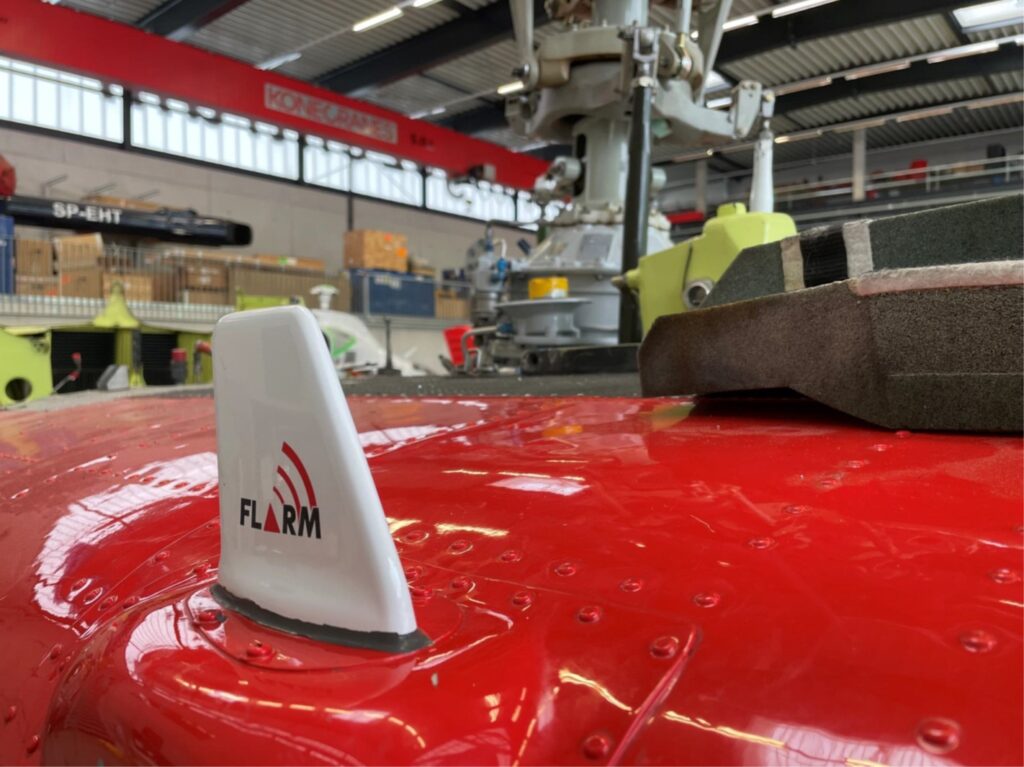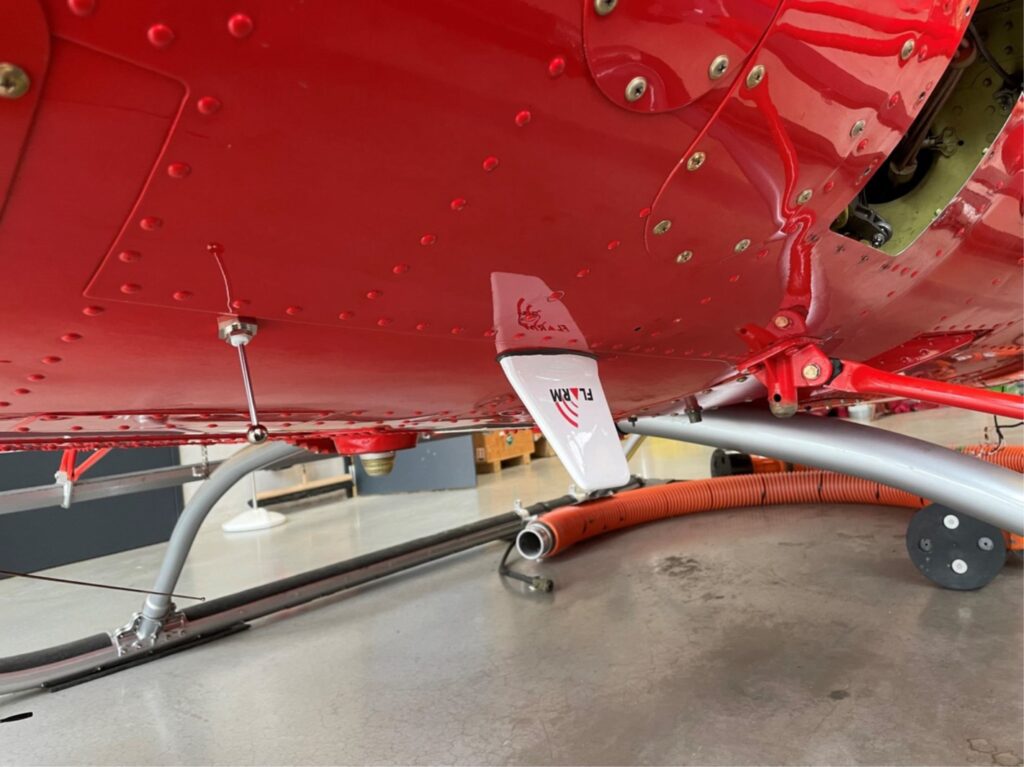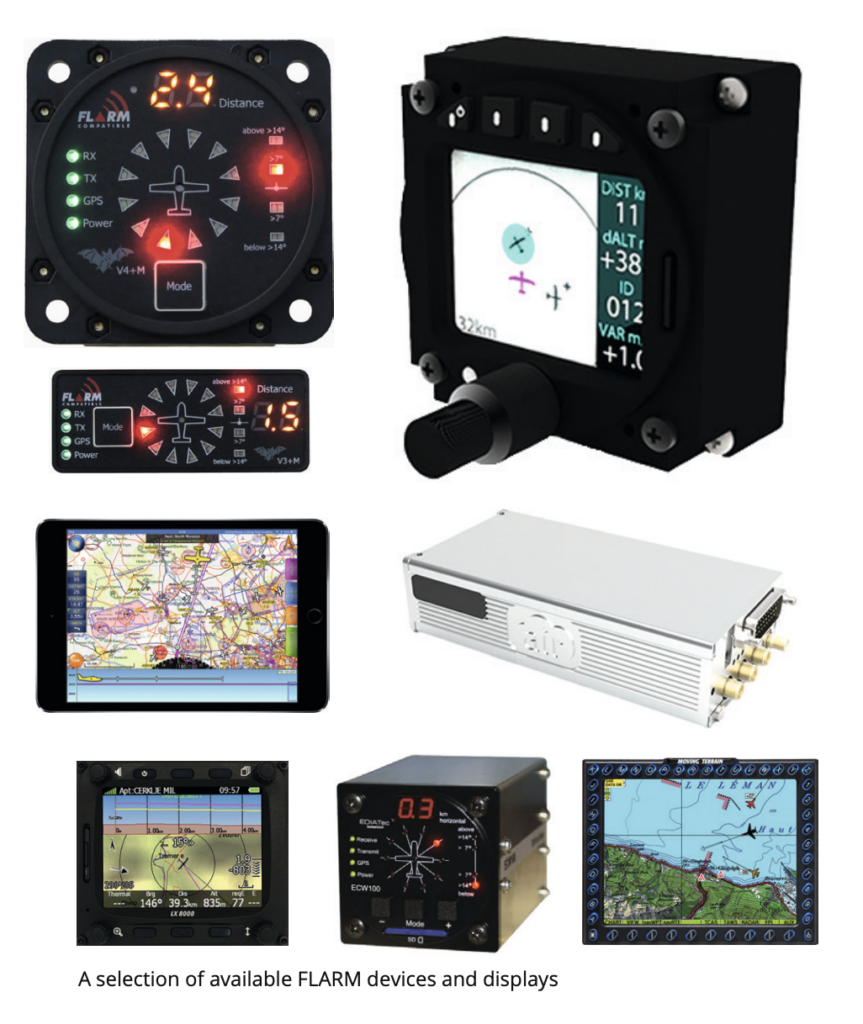Inside the FLARM Collision Avoidance System


(Photos: FLARM)
FLARM (FLight alARM), a traffic and collision avoidance system developed by the company of the same name, is helping pilots to avoid collisions by bolstering their situational awareness. With several aircraft across the world now equipped with this technology, Flarm Technology hopes its collision avoidance system will help maintain the aviation industry’s strong safety record.
FLARM mitigates the risk of in-flight collisions by calculating and sharing an aircraft’s future flight paths with other nearby aircraft all while collecting the same data from surrounding air traffic. Then, using an intelligent motion prediction algorithm, FLARM calculates the collision risk for an aircraft based on an integrated risk model. The system works even in areas with limited radar coverage.
Most FLARM systems incorporate an ADS-B and transponder receiver which incorporates transponder-equipped aircraft into the collision prediction algorithm, the company says. This is particularly important for operations in high-density traffic airspace.
The most recent aircraft to receive this technology is the Bell 214 helicopter. The two-bladed rotorcraft, which was built between 1970 and 1981, has a service ceiling of 16,400 feet and a range of 220 nautical miles. The helicopter has a cruise speed of 140 knots and a length of just under 50 feet. These specifications have made it a popular choice for military and air rescue operations, both sectors of the aviation industry in which a strong collision avoidance system is not only useful, but also a potentially life-saving feature.
When installed by SPAES Aviation, two FLARM antennas were strategically placed on the helicopter to maximize both transmission and signal reception. Equipping the helicopter with FLARM also required integrating the system’s avionics with the existing avionics suite of the Bell 214. Thanks to close collaboration with the customer, SPAES reported that the integration of FLARM with the aircraft’s existing systems and interfaces was a seamless process. Following its installation, SPAES performed extensive testing to validate the performance and functionality of the system, and the results showed that FLARM met the highest industry standards and regulations.

FLARM calculates and broadcasts its future flight path to nearby aircraft. It also receives future flight paths from any nearby aircraft. An algorithm calculates a predicted risk of collision for each aircraft, and pilots are alerted when a collision is imminent.
Operators using FLARM will enjoy several benefits that enhance the safety of flight, the company says. For one, pilots will experience improved situational awareness thanks to the ability to detect nearby traffic, even in low visibility and non-optimal weather conditions. The system also provides visual and audio alerts to pilots, thus helping to ensure that collisions are avoided by allowing pilots to take evasive actions in a timely manner.
“Installing the FLARM collision avoidance system in the Bell 214 helicopter not only elevates safety measures but also instills confidence and reassurance among pilots and operators,” said Joachim Schanz, CEO of SPAES Aviation.
This system is compatible with a variety of aircraft types extending well beyond the Bell 214, FLARM says. Several variations of the system were created to give customers more flexible options when installing FLARM. For example, PowerFLARM Portable was created for aircraft where behind-the-panel installation isn’t possible. With variations accommodating a variety of aircraft designs, FLARM hopes its system will prove to be popular across many industry segments and aircraft types.
While SPAES Aviation installed FLARM on the Bell 214, it offers a variety of products and services that support aircraft operations for customers. The aerospace company dedicates much of its efforts to the development of mission equipment and creating features that help crews in challenging situations and conditions. Its range of avionics services in this area includes entertainment, flight management, GPS, WHEEL ALT, data recording, TCAS, and COM/NAV.
SPAES is a standalone Part 21J design organization and Part 21G production organization. The company has European-wide access to several aviation companies and maintenance organizations.
The company also develops medical systems to support air-rescue crews. Oftentimes these crews are faced with patients in life-threatening conditions, meaning having optimal medical equipment installed on aircraft can save lives. Additionally, SPAES supports firms in engineering projects. For years it has worked with customers to help develop and approve new aviation technologies. The development of aircraft structural components and integration of tactical systems are just two examples of how it helps customers reach their goals through project support, and how it supported customers while integrating FLARM with the Bell 214’s existing systems.
FLARM is one of the partners involved in Switzerland’s U-space Implementation (SUSI). The Swiss U-space Implementation framework was designed by the Federal Office of Civil Aviation (FOCA) to build an open ecosystem for uncrewed traffic management, or UTM, in Switzerland. FLARM is working on electronic identification for uncrewed aircraft systems (UAS). Regulations have started to require UAS to be identified remotely by electronic means, which is done in combination with a UAS registry database. This improves security and provides easier access to airspace for operators.

The principle of electronic identification (eID) is that a cooperative UAS regularly broadcasts a unique identifier and the current position through a radio frequency digital message. This enables authorized parties to detect, identify, locate, and track UAS anywhere at any time, also in the absence of network connectivity or other infrastructure.
SPAES Aviation’s latest project of installing FLARM on the Bell 214 helicopter demonstrates its dedication to helping customers modernize their fleets and operations with better technology. With more aircraft taking to the skies than ever before, modern collision avoidance solutions will be critical to maintaining safety in the aviation industry.
—————
Boost Internet Speed–
Free Business Hosting–
Free Email Account–
Dropcatch–
Free Secure Email–
Secure Email–
Cheap VOIP Calls–
Free Hosting–
Boost Inflight Wifi–
Premium Domains–
Free Domains





